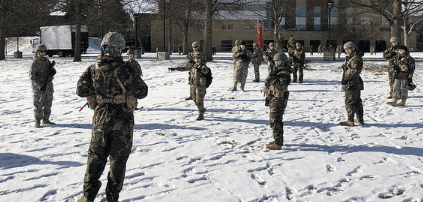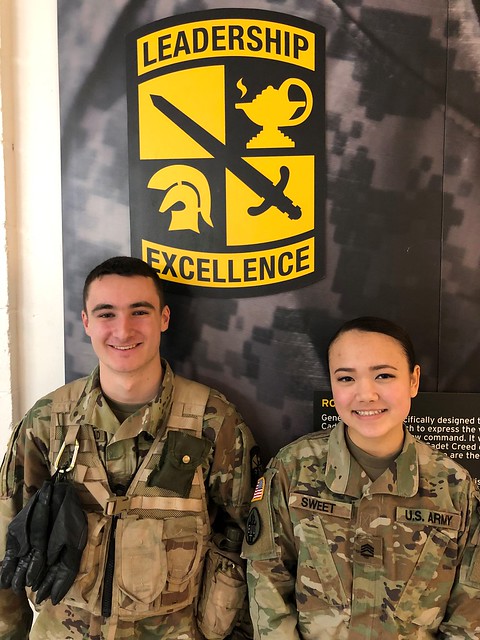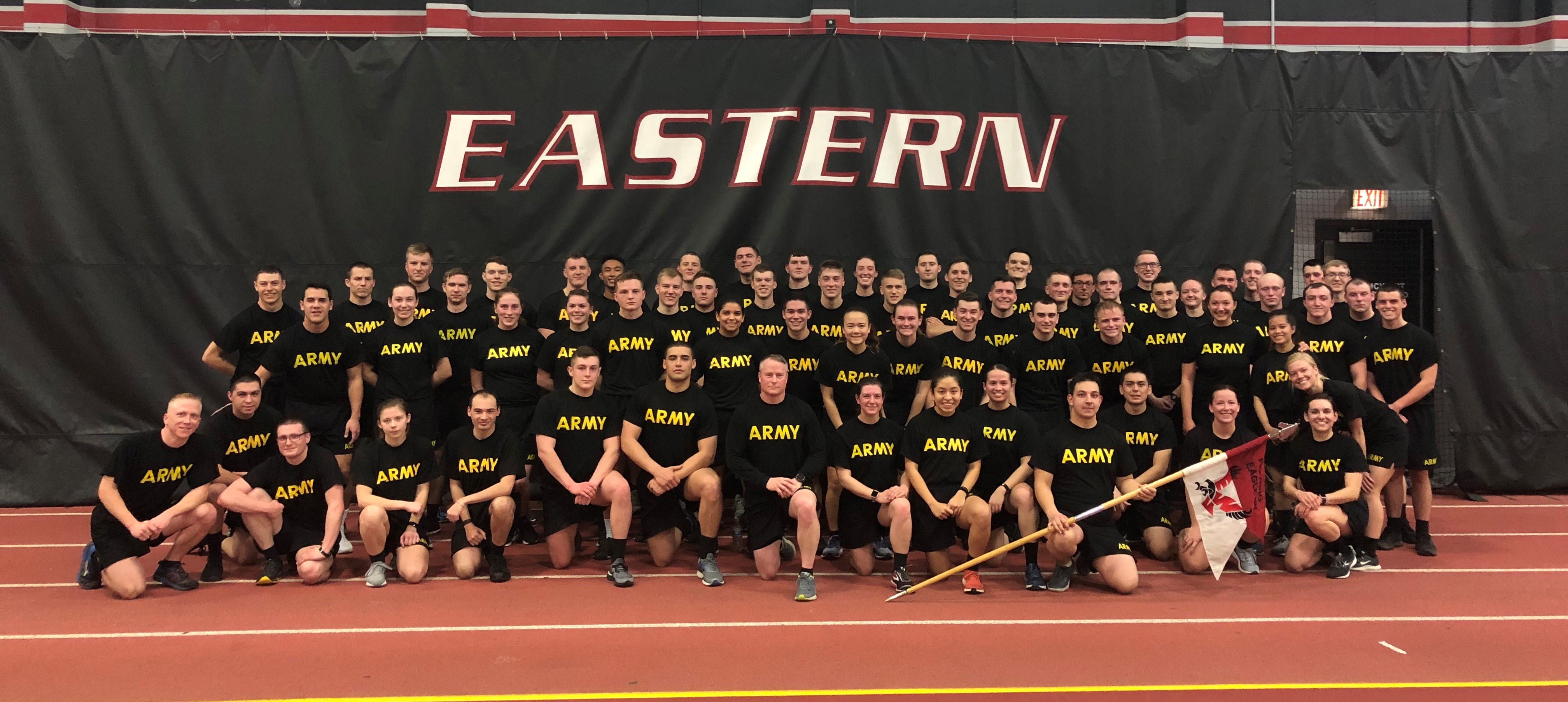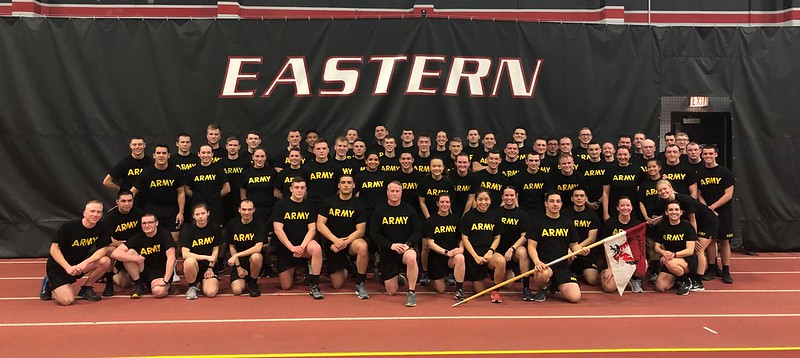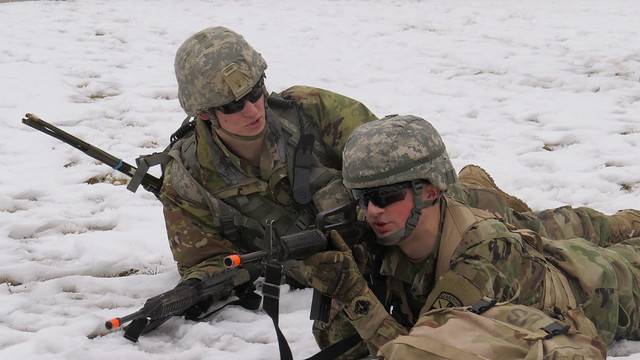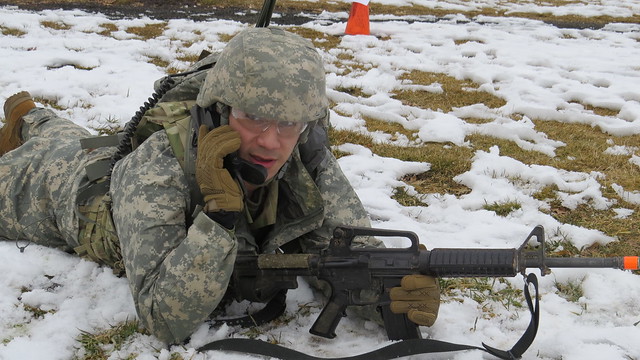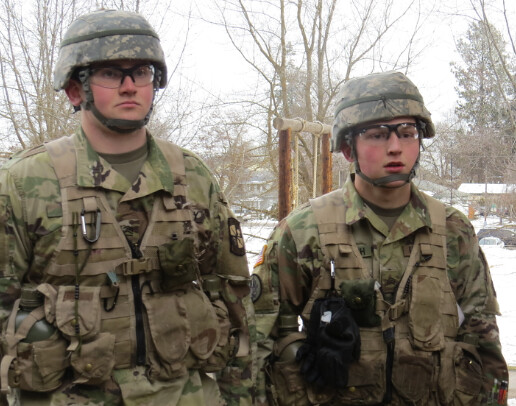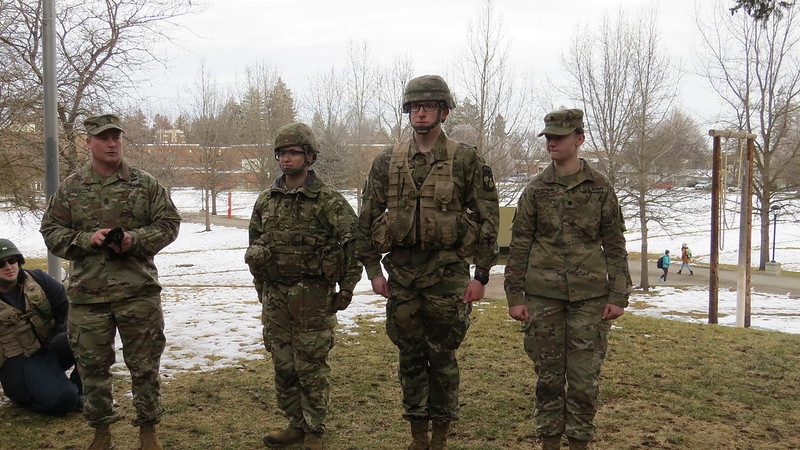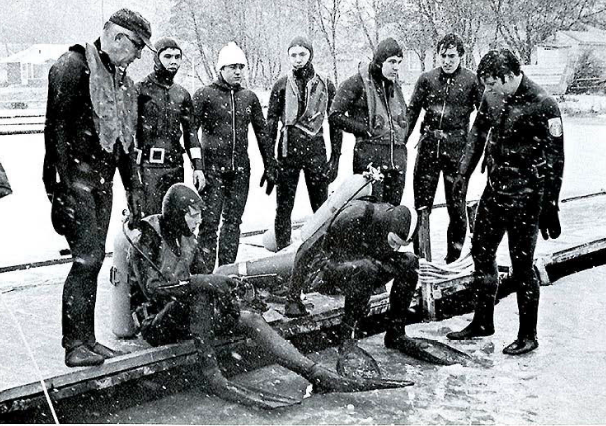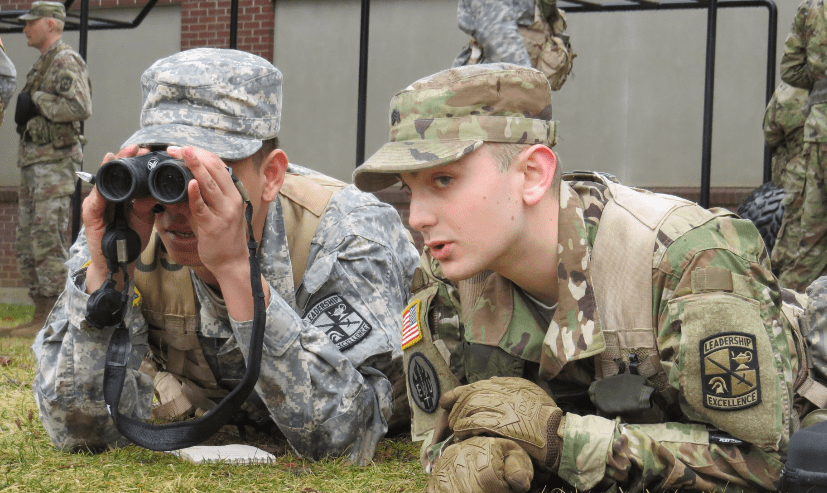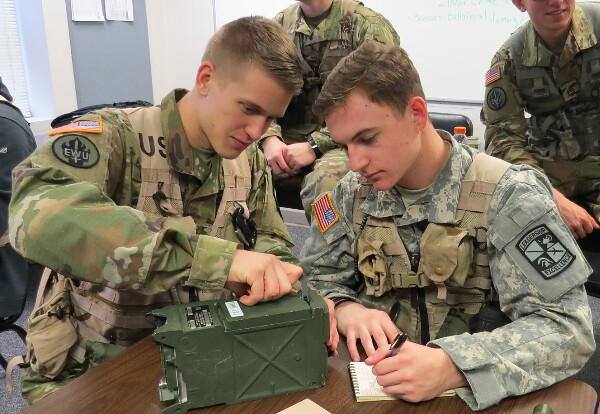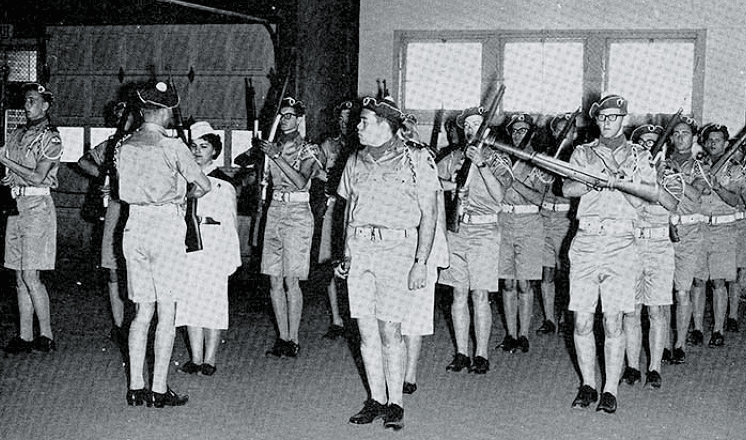On February, 7 2019, the Eastern Washington University (EWU) ROTC battalion conducted its weekly leadership lab at John F. Kennedy (JFK) Field. The temperatures were well below freezing, but this did not stop the Fighting Eagles Battalion Cadets from executing an outstanding leadership lab. This week Cadets went over how to properly execute movement formations and techniques and how to cross a linear danger area (LDA) in squad size elements. After first formation, the officer in charge (OIC) Cadet Ryan Smith, gave an overview brief of the sequences of events for the lab before releasing each platoon to their assigned stations.
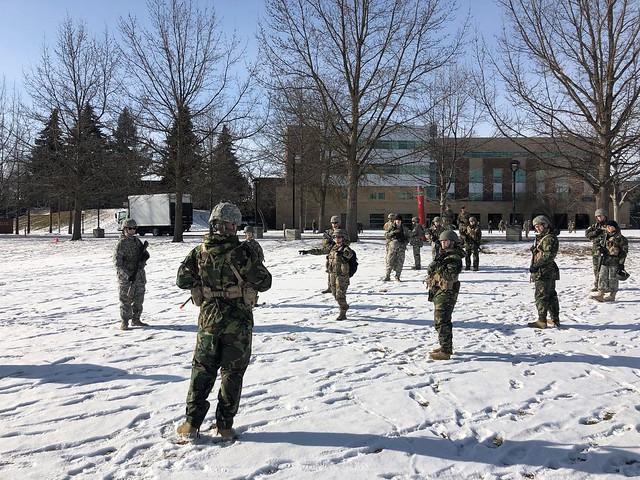
Cadet Haley Bent (center) instructs Cadets on proper movement formations.
At each station there was one senior Cadet (MS-IV) assisting and evaluating the squads in each platoon on proper movement techniques. Each platoon started out with movement formations where their MS-IV Cadet showed them how that station should be done. This allowed the junior (MS-III) Cadets an opportunity to see what the performance standards on how the training should look if properly executed. The first station the platoons executed and were evaluated on was movement formations. The movement formations consisted of a wedge, line and file formations. These formations are used in different terrains so that personnel can more easily move through it while maintaining security.
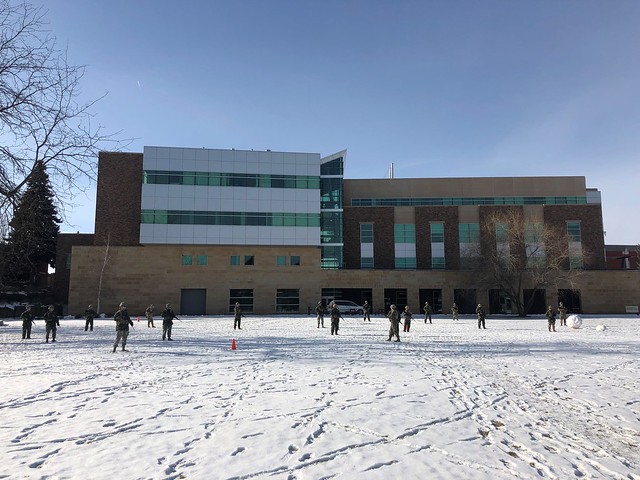
EWU ROTC Cadets practice how to conduct a wedge formation in front of the EWU Computer and Engineering building.
After movement formations, the Cadets then trained and tested on movement techniques. The techniques Cadets executed were “traveling”, which allows personnel to move at a faster pace, but has the least security. The next technique was “traveling over watch”, which is a slower pace than traveling, but provides better security. Finally “bounding over watch” which is when personnel move at a slower pace, but it provides the best security.
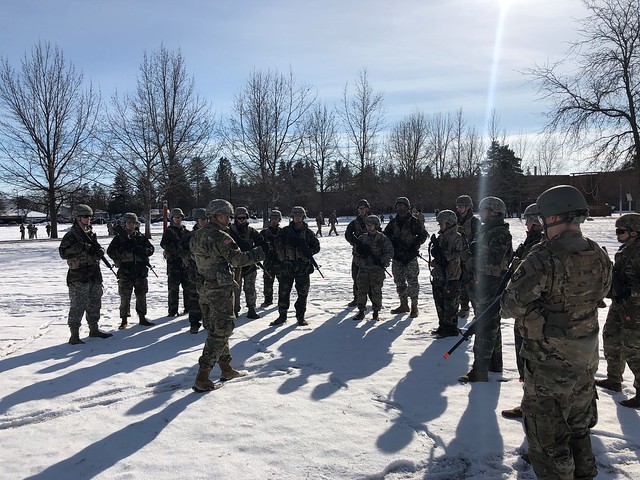
Cadet Tyler Roylance (center) provides instruction on how to execute proper movement techniques.
The last training objective that the Cadets executed was a Linear Danger Area (LDA) crossing. This technique is used when personnel are moving towards an objective and have to get across any road or linear area safely. LDA crossings consist of setting up security on both sides of the road, then having the other side of the road secured before the rest of the element crosses the road.
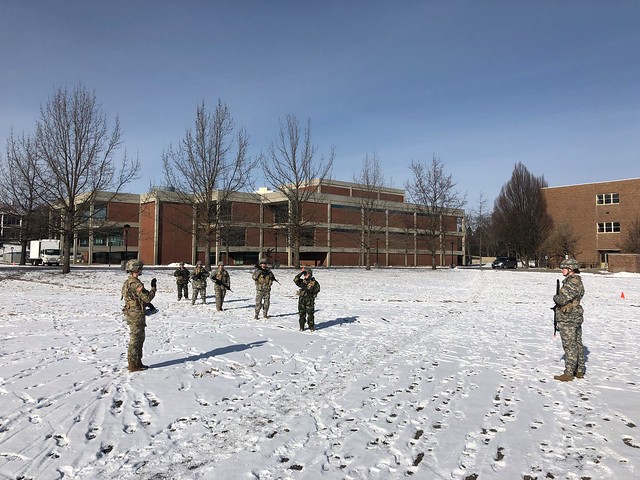
Cadet Megan Anderson (left) trains Cadets during the weekly leadership lab at JFK Field.
After completing each station, the Cadets had an after action report (AAR), that allowed the MS-IV to brief the MS-III Cadets on how their squads performed. Each MS-III was graded at the station with quantifiable performance measures. This helped Cadets know what they need to work on the next time they ran through that station again. The lab ended when all the squads were able to pass the evaluation for each station. The skills trained on during the lab further builds the basic solider knowledge for the Cadets as they prepare for the Winter FTX next month.
